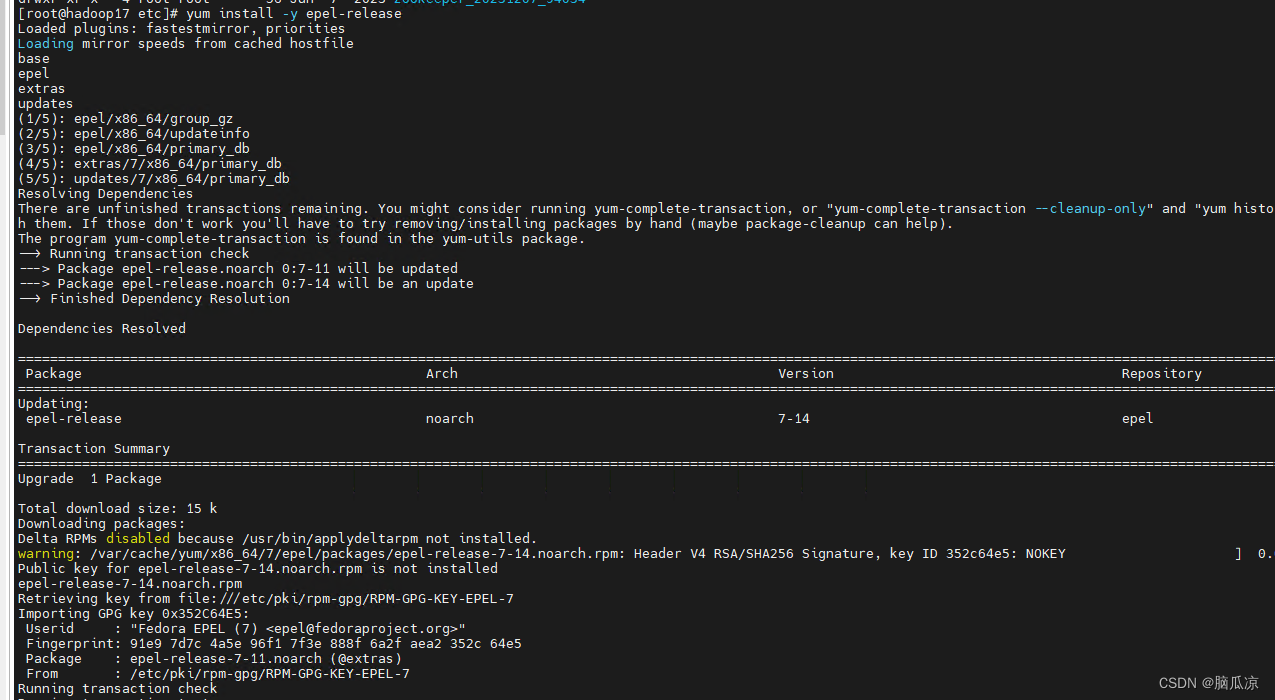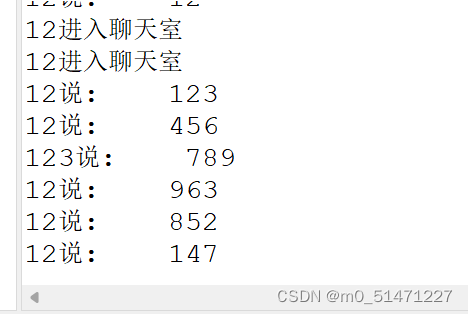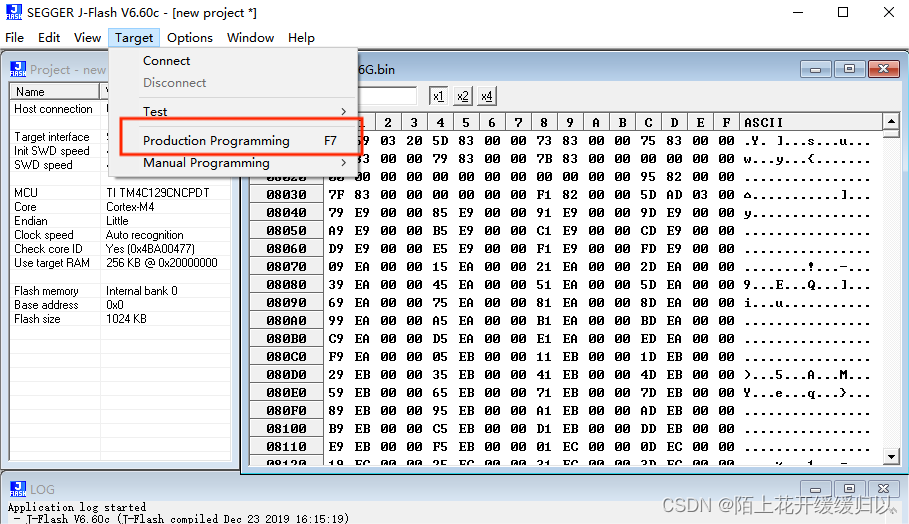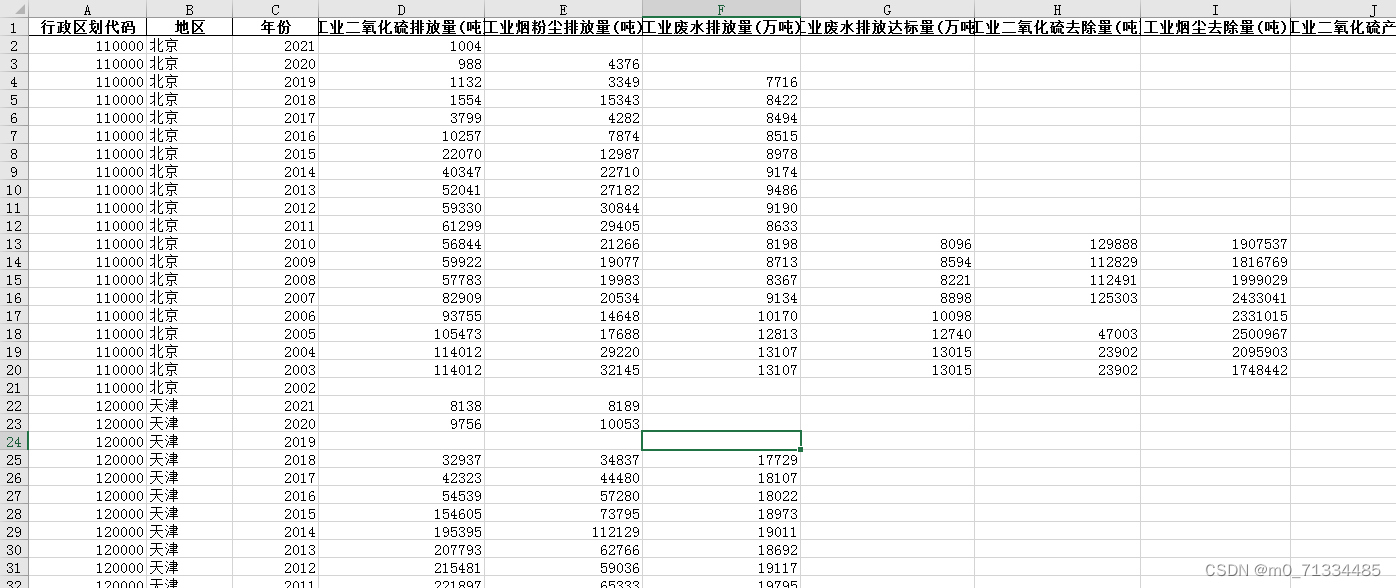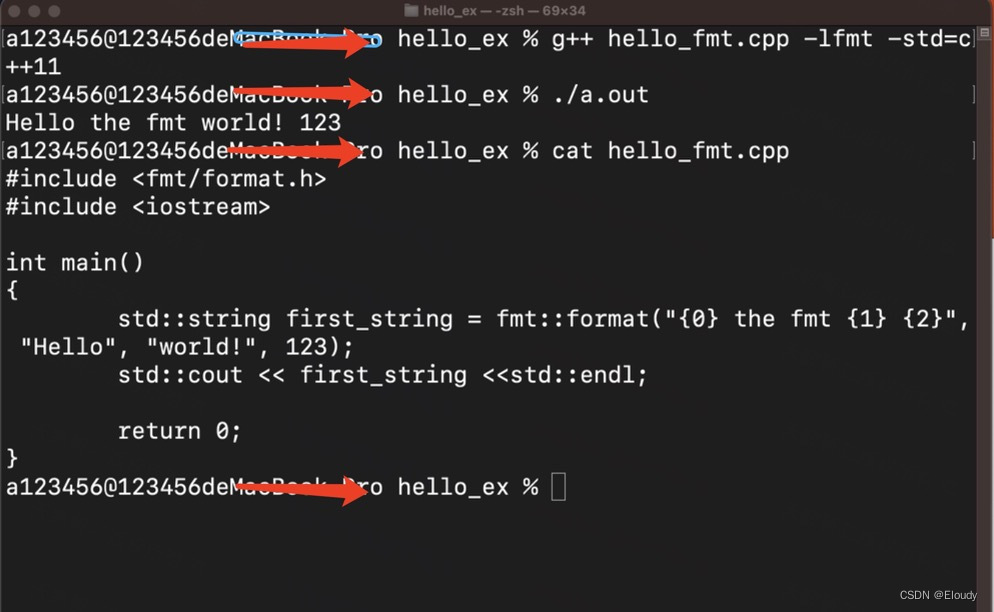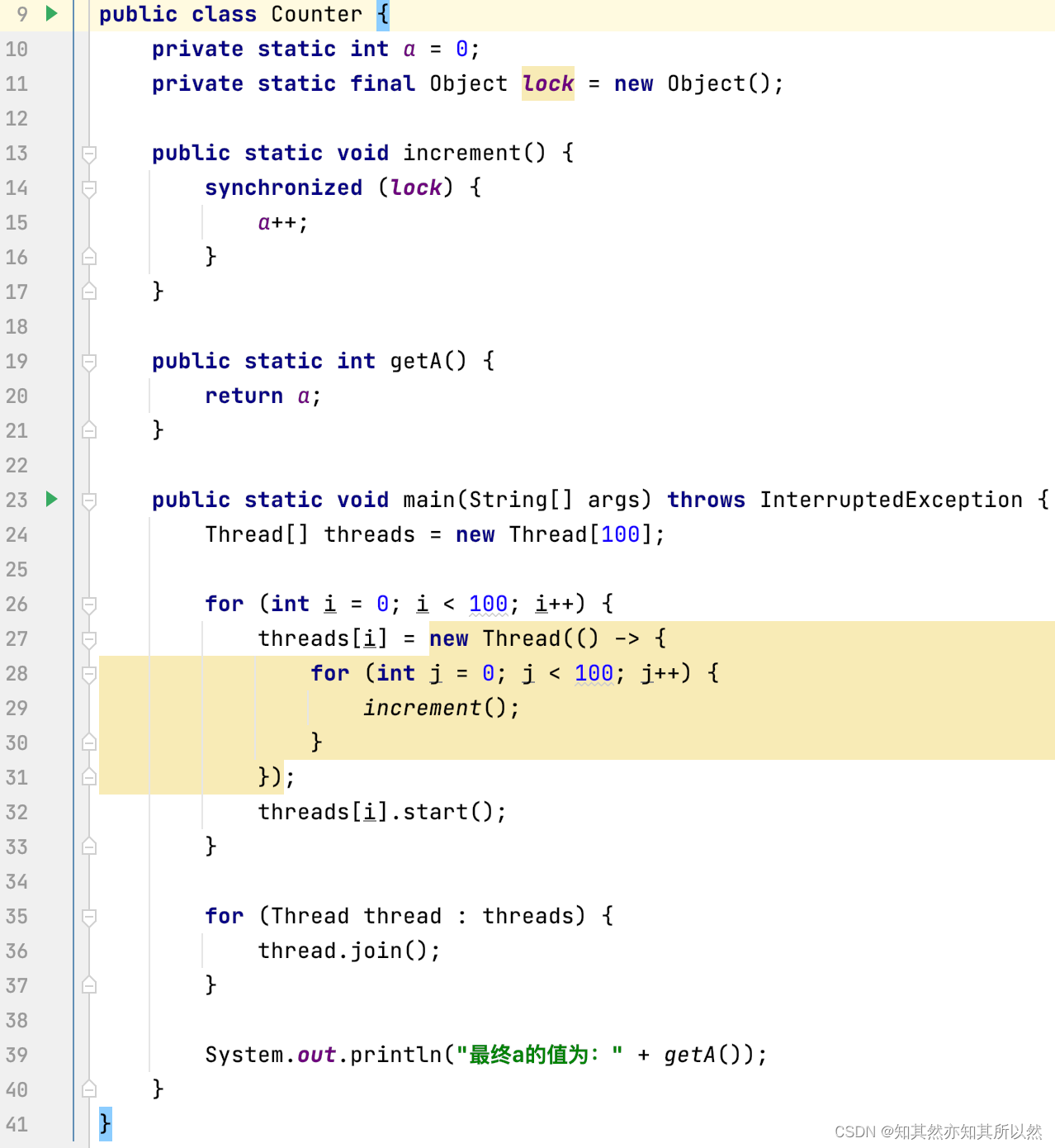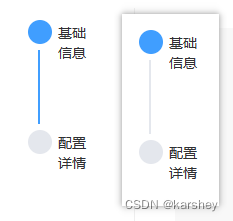HashMap详解
介绍
HashMap是在项目中使用的最多的Map,实现了Map接口,继承AbstractMap。基于哈希表的Map接口实现,不包含重复的键,一个键对应一个值,在HashMap存储的时候会将key、value作为一个整体Entry进行存储。
HashMap中会根据hash算法来计算key所对应的存储位置。
继承关系
public class HashMap<K,V> extends AbstractMap<K,V>
implements Map<K,V>, Cloneable, Serializable
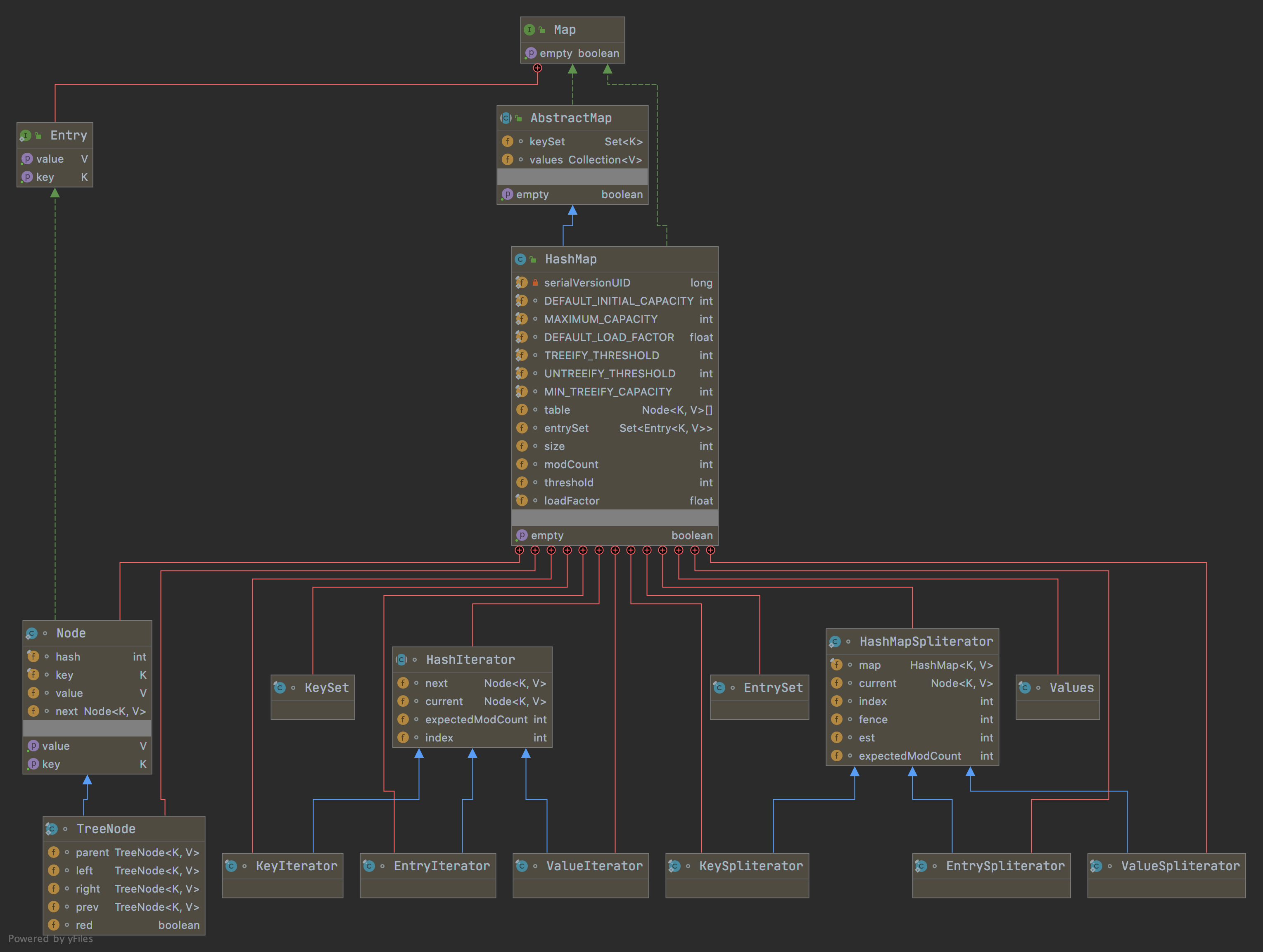
数据结构
数组+链表+红黑树
默认采用数组+链表的方式存储元素,当元素出现哈希冲突时,HashMap使用链地址法来解决hash冲突,会存储在该位置的链表中。当链表中元素个数超过8个时,会尝试将链表转为红黑树存储。但是在转换前,会判断一次当前数组的长度,当数组长度大于64时才会处理,否则进行扩容操作
源码解析
重要参数
初始大小和加载因子
-
初始大小用来规定哈希表数组的长度
-
加载因子用来表示哈希表元素的填满程度,加载因子越大哈希表的空间利用率越高,但是哈希冲突的几率也会越大
静态常量
/**
* 默认初始容量16,必须为2的次幂
*/
static final int DEFAULT_INITIAL_CAPACITY = 1 << 4; // aka 16
/**
* 最大容量 最大为1<<30 即2^30
*/
static final int MAXIMUM_CAPACITY = 1 << 30;
/**
* 默认加载因子 0.75
*/
static final float DEFAULT_LOAD_FACTOR = 0.75f;
/**
* hash冲突链表节点个数大于8时,会转化为红黑树
*/
static final int TREEIFY_THRESHOLD = 8;
/**
* hash冲突时,当红黑树存储中节点少于6时,则转化为单链表存储
*/
static final int UNTREEIFY_THRESHOLD = 6;
/**
* 链表转为红黑树的最小表容量,如果没有达到该容量,将进行扩容
* 该值设置至小为4*TREEIFY_THRESHOLD
*/
static final int MIN_TREEIFY_CAPACITY = 64;
为什么容量一定要是2次幂
在计算数组下标时使用的是(n - 1) & hash来计算的,当n为2次幂时,n-1的低位将全是1,哈希值进行与操作时保证低位不变,最终得到的index结果,完全取决于key的hashCode的最后几位,从而保证分布均匀,效果等同于取模,且性能比取模高。
Node
HashMap中的元素都存储在Node数组中,看一下Node的结构
transient Node<K,V>[] table;
static class Node<K,V> implements Map.Entry<K,V> {
// 该Node节点的hash值
final int hash;
final K key;
V value;
// 链表的下一个节点
Node<K,V> next;
Node(int hash, K key, V value, Node<K,V> next) {
this.hash = hash;
this.key = key;
this.value = value;
this.next = next;
}
public final K getKey() { return key; }
public final V getValue() { return value; }
public final String toString() { return key + "=" + value; }
public final int hashCode() {
return Objects.hashCode(key) ^ Objects.hashCode(value);
}
public final V setValue(V newValue) {
V oldValue = value;
value = newValue;
return oldValue;
}
public final boolean equals(Object o) {
if (o == this)
return true;
if (o instanceof Map.Entry) {
Map.Entry<?,?> e = (Map.Entry<?,?>)o;
if (Objects.equals(key, e.getKey()) &&
Objects.equals(value, e.getValue()))
return true;
}
return false;
}
}

如果是链表,则使用的是Node存储(单向链表);如果是红黑树,则使用的是TreeNode
构造函数
无参构造函数
public HashMap() {
this.loadFactor = DEFAULT_LOAD_FACTOR; // all other fields defaulted
}
指定初始容量
public HashMap(int initialCapacity) {
this(initialCapacity, DEFAULT_LOAD_FACTOR);
}
指定初始容量和加载因子
public HashMap(int initialCapacity, float loadFactor) {
if (initialCapacity < 0)
throw new IllegalArgumentException("Illegal initial capacity: " +
initialCapacity);
if (initialCapacity > MAXIMUM_CAPACITY)
initialCapacity = MAXIMUM_CAPACITY;
if (loadFactor <= 0 || Float.isNaN(loadFactor))
throw new IllegalArgumentException("Illegal load factor: " +
loadFactor);
this.loadFactor = loadFactor;
this.threshold = tableSizeFor(initialCapacity);
}
/**
* 返回大于等于cap最小的2的幂
*/
static final int tableSizeFor(int cap) {
int n = cap - 1;
// 右移一位,在进行按位或 保证了除最高位之外全是1
n |= n >>> 1;
n |= n >>> 2;
n |= n >>> 4;
n |= n >>> 8;
n |= n >>> 16;
return (n < 0) ? 1 : (n >= MAXIMUM_CAPACITY) ? MAXIMUM_CAPACITY : n + 1;
}
传入map
public HashMap(Map<? extends K, ? extends V> m) {
this.loadFactor = DEFAULT_LOAD_FACTOR;
putMapEntries(m, false);
}
方法分析
put方法添加元素
public V put(K key, V value) {
return putVal(hash(key), key, value, false, true);
}
/**
* 调用 hash(K) 方法计算 K 的 hash 值
* 将key的hash值进行高16位和低16位异或操作,增加低16位的随机性,减少哈希冲突
*/
static final int hash(Object key) {
int h;
// 右移16位是为了使得hash值的高位参与运算
// 在计算索引位置时,使用的是(n - 1) & hash 而对于数组来说一般情况下数组长度不会超过2^16,这样就会导致hash值只有低位在使用,而高位不会参与运算,所以使用hash值来右移16位,使得高十六位也参与到运算
return (key == null) ? 0 : (h = key.hashCode()) ^ (h >>> 16);
}
final V putVal(int hash, K key, V value, boolean onlyIfAbsent,
boolean evict) {
Node<K,V>[] tab; Node<K,V> p; int n, i;
// 第一次添加元素table为null,resize()进行数组初始化
if ((tab = table) == null || (n = tab.length) == 0)
n = (tab = resize()).length;
// hash值结合数组长度,计算得数组下标
// 使用(n-1)&hash找到下标位置,如果当前没有元素,则创建Node对象,放到数组该位置
if ((p = tab[i = (n - 1) & hash]) == null)
tab[i] = newNode(hash, key, value, null);
else { // 数组该位置已有值,hash冲突
Node<K,V> e; K k;
// 哈希值与key值都相同,则进行value值替代,更新
if (p.hash == hash &&
((k = p.key) == key || (key != null && key.equals(k))))
e = p;
else if (p instanceof TreeNode) // hash值相等,但是key不相等,且为红黑树
e = ((TreeNode<K,V>)p).putTreeVal(this, tab, hash, key, value);
else { // hash值相等,但是key不等,且为链表
for (int binCount = 0; ; ++binCount) {
if ((e = p.next) == null) { // 追加到链表末尾
p.next = newNode(hash, key, value, null);
if (binCount >= TREEIFY_THRESHOLD - 1) // -1 for 1st 是否超过阈值,超过则进行链表转红黑树 表示添加之后的长度和TREEIFY_THRESHOLD进行比较
treeifyBin(tab, hash);
break;
}
if (e.hash == hash &&
((k = e.key) == key || (key != null && key.equals(k))))
break;
p = e;
}
}
if (e != null) { // existing mapping for key
V oldValue = e.value; // 进行
if (!onlyIfAbsent || oldValue == null)
e.value = value;
afterNodeAccess(e);
return oldValue;
}
}
++modCount;
if (++size > threshold) // 元素个数大于新增阈值,进行resize()扩容
resize();
afterNodeInsertion(evict);
return null;
}
两个key对象hash值相同就会发生hash碰撞,此时就会将Node插入链表中(JDK7采用头插法,JDK8采用尾插法)
扩容
当hashMap中的容量达到阈值时,就会开始扩容操作
final Node<K,V>[] resize() {
Node<K,V>[] oldTab = table;// 当前的数组
int oldCap = (oldTab == null) ? 0 : oldTab.length;
int oldThr = threshold;
int newCap, newThr = 0;
if (oldCap > 0) {
if (oldCap >= MAXIMUM_CAPACITY) { // 当前长度超过了最大容量,新增阈值为Integer.MAX_VALUE
threshold = Integer.MAX_VALUE;
return oldTab;
}
else if ((newCap = oldCap << 1) < MAXIMUM_CAPACITY &&
oldCap >= DEFAULT_INITIAL_CAPACITY) // 容量扩容为2倍且当新容量小于最大容量,原来的容量大于默认初始容量时,阈值扩容为2倍
newThr = oldThr << 1; // double threshold
}
else if (oldThr > 0) // 此时oldCap<=0,指定了阈值,将阈值赋给容量 initial capacity was placed in threshold
newCap = oldThr;
else { // 没有指定阈值,容量为初始阈值,阈值为初始阈值*加载因子 // zero initial threshold signifies using defaults
newCap = DEFAULT_INITIAL_CAPACITY;
newThr = (int)(DEFAULT_LOAD_FACTOR * DEFAULT_INITIAL_CAPACITY);
}
if (newThr == 0) { // 按照给定的初始容量计算阈值
float ft = (float)newCap * loadFactor;
newThr = (newCap < MAXIMUM_CAPACITY && ft < (float)MAXIMUM_CAPACITY ?
(int)ft : Integer.MAX_VALUE);
}
threshold = newThr;
@SuppressWarnings({"rawtypes","unchecked"})
Node<K,V>[] newTab = (Node<K,V>[])new Node[newCap];// 扩容后的数组
table = newTab;
if (oldTab != null) { // 将原数组的数据放入到新数组中
for (int j = 0; j < oldCap; ++j) {
Node<K,V> e;
if ((e = oldTab[j]) != null) {
oldTab[j] = null;
if (e.next == null) // 无后继节点,直接放入新数组计算的位置中
newTab[e.hash & (newCap - 1)] = e;
else if (e instanceof TreeNode) // 为红黑树节点,进行拆分
((TreeNode<K,V>)e).split(this, newTab, j, oldCap);
else { // preserve order 有后继节点,且为链表
Node<K,V> loHead = null, loTail = null; // 保存在原索引的链表中
Node<K,V> hiHead = null, hiTail = null; // 保存在新索引的链表中
Node<K,V> next;
do {
next = e.next;
if ((e.hash & oldCap) == 0) { // 哈希值和原数组容量进行&操作,为0,则放入原数组的索引位置
if (loTail == null)
loHead = e;
else
loTail.next = e;
loTail = e;
}
else { // 非0则放入原数组索引位置+原数组长度的新位置
if (hiTail == null)
hiHead = e;
else
hiTail.next = e;
hiTail = e;
}
} while ((e = next) != null);
if (loTail != null) {
loTail.next = null;
newTab[j] = loHead;
}
if (hiTail != null) {
hiTail.next = null;
newTab[j + oldCap] = hiHead;
}
}
}
}
}
return newTab;
}
红黑树转换
将单向链表转为双向链表,再遍历双向链表转为红黑树
final void treeifyBin(Node<K,V>[] tab, int hash) {
int n, index; Node<K,V> e;
// 判断是否容量到达红黑树转换的最小容量
if (tab == null || (n = tab.length) < MIN_TREEIFY_CAPACITY)
resize();
else if ((e = tab[index = (n - 1) & hash]) != null) {
TreeNode<K,V> hd = null, tl = null; // hd指向首节点,tl指向尾结点
do {
TreeNode<K,V> p = replacementTreeNode(e, null); // 将链表转为红黑树
if (tl == null) // 如果尾结点为null,说明还没有首节点
hd = p; // 当前节点为首节点
else { // 尾结点不为null,构造一个双向链表,将当前节点追加到双向链表的末尾
p.prev = tl;
tl.next = p;
}
tl = p;
} while ((e = e.next) != null);
// 将原本的单链表转化为一个节点类型为TreeNode的双向链表
if ((tab[index] = hd) != null) // 把转换后的双向链表,替换数组原来位置上的单向链表
hd.treeify(tab); // 将当前双向链表树形化
}
}
双向链表转为红黑树
final void treeify(Node<K,V>[] tab) {
TreeNode<K,V> root = null; //定义红黑树根节点
for (TreeNode<K,V> x = this, next; x != null; x = next) { // 从TreeNode双向链表的头节点开始遍历
next = (TreeNode<K,V>)x.next;
x.left = x.right = null;
if (root == null) { // 不存在根节点
x.parent = null;
x.red = false; // 红黑树根节点为黑色
root = x; // 当前元素设为根节点
}
else { // 存在根节点
K k = x.key;
int h = x.hash;
Class<?> kc = null;
for (TreeNode<K,V> p = root;;) { //遍历红黑树
int dir, ph;
K pk = p.key;
if ((ph = p.hash) > h) // 当前红黑树节点p的hash值大于双向链表节点x的哈希值
dir = -1;
else if (ph < h) // 当前红黑树节点p的hash值小于双向链表节点x的哈希值
dir = 1;
else if ((kc == null &&
(kc = comparableClassFor(k)) == null) ||
(dir = compareComparables(kc, k, pk)) == 0) // 两者相等,使用比较器比较
dir = tieBreakOrder(k, pk);
TreeNode<K,V> xp = p;
if ((p = (dir <= 0) ? p.left : p.right) == null) { // 当前红黑树p为叶子节点
x.parent = xp;
if (dir <= 0) // 根据dir的值,确认是p的左节点还是右节点
xp.left = x;
else
xp.right = x;
root = balanceInsertion(root, x); // 进行平衡调整
break;
}
}
}
}
// 将TreeNode双向链表转换为红黑树之后,将根节点作为数组的当前位置
moveRootToFront(tab, root);
}
将红黑树的根节点移动到数组的索引所在位置
static <K,V> void moveRootToFront(Node<K,V>[] tab, TreeNode<K,V> root) {
int n;
if (root != null && tab != null && (n = tab.length) > 0) {
int index = (n - 1) & root.hash;
TreeNode<K,V> first = (TreeNode<K,V>)tab[index]; // 数组当前索引的元素
if (root != first) { // 根节点不是当前元素
Node<K,V> rn;
tab[index] = root; // 将根节点设置为当前索引的元素
TreeNode<K,V> rp = root.prev;
if ((rn = root.next) != null)
((TreeNode<K,V>)rn).prev = rp;
if (rp != null)
rp.next = rn;
if (first != null)
first.prev = root;
root.next = first;
root.prev = null;
}
assert checkInvariants(root);
}
}
使用红黑树是因为二叉树在特殊情况下会变成线性结构,导致遍历依然很慢,而红黑树插入数据会通过左旋、右旋、变色操作来保持平衡
红黑树插入
final TreeNode<K,V> putTreeVal(HashMap<K,V> map, Node<K,V>[] tab,
int h, K k, V v) {
Class<?> kc = null;
boolean searched = false;
TreeNode<K,V> root = (parent != null) ? root() : this;
for (TreeNode<K,V> p = root;;) {
int dir, ph; K pk;
if ((ph = p.hash) > h)
dir = -1;
else if (ph < h)
dir = 1;
else if ((pk = p.key) == k || (k != null && k.equals(pk)))
return p;
else if ((kc == null &&
(kc = comparableClassFor(k)) == null) ||
(dir = compareComparables(kc, k, pk)) == 0) {
if (!searched) {
TreeNode<K,V> q, ch;
searched = true;
if (((ch = p.left) != null &&
(q = ch.find(h, k, kc)) != null) ||
((ch = p.right) != null &&
(q = ch.find(h, k, kc)) != null))
return q;
}
dir = tieBreakOrder(k, pk);
}
TreeNode<K,V> xp = p;
if ((p = (dir <= 0) ? p.left : p.right) == null) {
Node<K,V> xpn = xp.next;
TreeNode<K,V> x = map.newTreeNode(h, k, v, xpn);
if (dir <= 0)
xp.left = x;
else
xp.right = x;
xp.next = x;
x.parent = x.prev = xp;
if (xpn != null)
((TreeNode<K,V>)xpn).prev = x;
moveRootToFront(tab, balanceInsertion(root, x));
return null;
}
}
}
红黑树拆分
在进行扩容操作时,会重新计算索引位置,拆分之后的红黑树需要判断个数,从而决定做去树化还是树化
final void split(HashMap<K,V> map, Node<K,V>[] tab, int index, int bit) {
TreeNode<K,V> b = this;
// Relink into lo and hi lists, preserving order
TreeNode<K,V> loHead = null, loTail = null; // 保存在原索引的红黑树
TreeNode<K,V> hiHead = null, hiTail = null; // 保存在新索引的红黑树
int lc = 0, hc = 0;
for (TreeNode<K,V> e = b, next; e != null; e = next) { // 与链表操作基本一致
next = (TreeNode<K,V>)e.next;
e.next = null;
if ((e.hash & bit) == 0) {
if ((e.prev = loTail) == null)
loHead = e;
else
loTail.next = e;
loTail = e;
++lc;
}
else {
if ((e.prev = hiTail) == null)
hiHead = e;
else
hiTail.next = e;
hiTail = e;
++hc;
}
}
if (loHead != null) { // 原索引位置
if (lc <= UNTREEIFY_THRESHOLD)
tab[index] = loHead.untreeify(map);
else {
tab[index] = loHead;
if (hiHead != null) // (else is already treeified)
loHead.treeify(tab);
}
}
if (hiHead != null) { // 新索引位置
if (hc <= UNTREEIFY_THRESHOLD) // 红黑树节点小于去树化阈值,进行去树化操作
tab[index + bit] = hiHead.untreeify(map);
else { // 大于去树化阈值,进行树化操作
tab[index + bit] = hiHead;
if (loHead != null)
hiHead.treeify(tab);
}
}
}
去树化操作
final Node<K,V> untreeify(HashMap<K,V> map) {
Node<K,V> hd = null, tl = null;
for (Node<K,V> q = this; q != null; q = q.next) {
Node<K,V> p = map.replacementNode(q, null);
if (tl == null)
hd = p;
else
tl.next = p;
tl = p;
}
return hd;
}
put操作的大致步骤如下:
-
对key进行hash操作,找到索引位置,如果此时索引位置为null,直接插入 -
如果此时索引位置不为null,说明出现了hash冲突,使用equals()比较key的值,如果存在与该key相同的值,则替换value -
如果不存在与该key相同的值,且此时存储结构为链表,则插入链表尾部,如果链表长度超过8个且数组长度大于64时,进行链表转红黑树 -
当数组中数据达到阈值,则需要进行扩容,扩容时需要进行去树化
get方法获取元素
public V get(Object key) {
Node<K,V> e;
return (e = getNode(hash(key), key)) == null ? null : e.value;
}
// hash为key的hash值
// key为所要查找的key对象
final Node<K,V> getNode(int hash, Object key) {
Node<K,V>[] tab; Node<K,V> first, e; int n; K k;
// 数组不为null且该索引位置的头节点不为null
if ((tab = table) != null && (n = tab.length) > 0 &&
(first = tab[(n - 1) & hash]) != null) {
// 先检查头节点是否匹配,若匹配直接返回
if (first.hash == hash && // always check first node
((k = first.key) == key || (key != null && key.equals(k))))
return first;
// 头节点不匹配,且有后继节点
if ((e = first.next) != null) {
// 红黑树
if (first instanceof TreeNode)
// 红黑树查找
return ((TreeNode<K,V>)first).getTreeNode(hash, key);
// 链表
do {
if (e.hash == hash &&
((k = e.key) == key || (key != null && key.equals(k))))
return e;
} while ((e = e.next) != null);// 进行遍历匹配
}
}
return null;
}
高并发问题
由于HashMap不是线程安全的,在高并发的情况下会出现问题,在插入时可能会出现问题
假如HashMap到达了扩容的临界点,此时有两个线程在同一时刻对HashMap进行put操作,两个线程都会进行扩容可能会形成链表环,一旦形成环形数据结构,Entry的next节点永远不为空,使得下一次读操作出现死循环
https://zhhll.icu/2020/java基础/集合/6.HashMap详解/
本文由 mdnice 多平台发布
